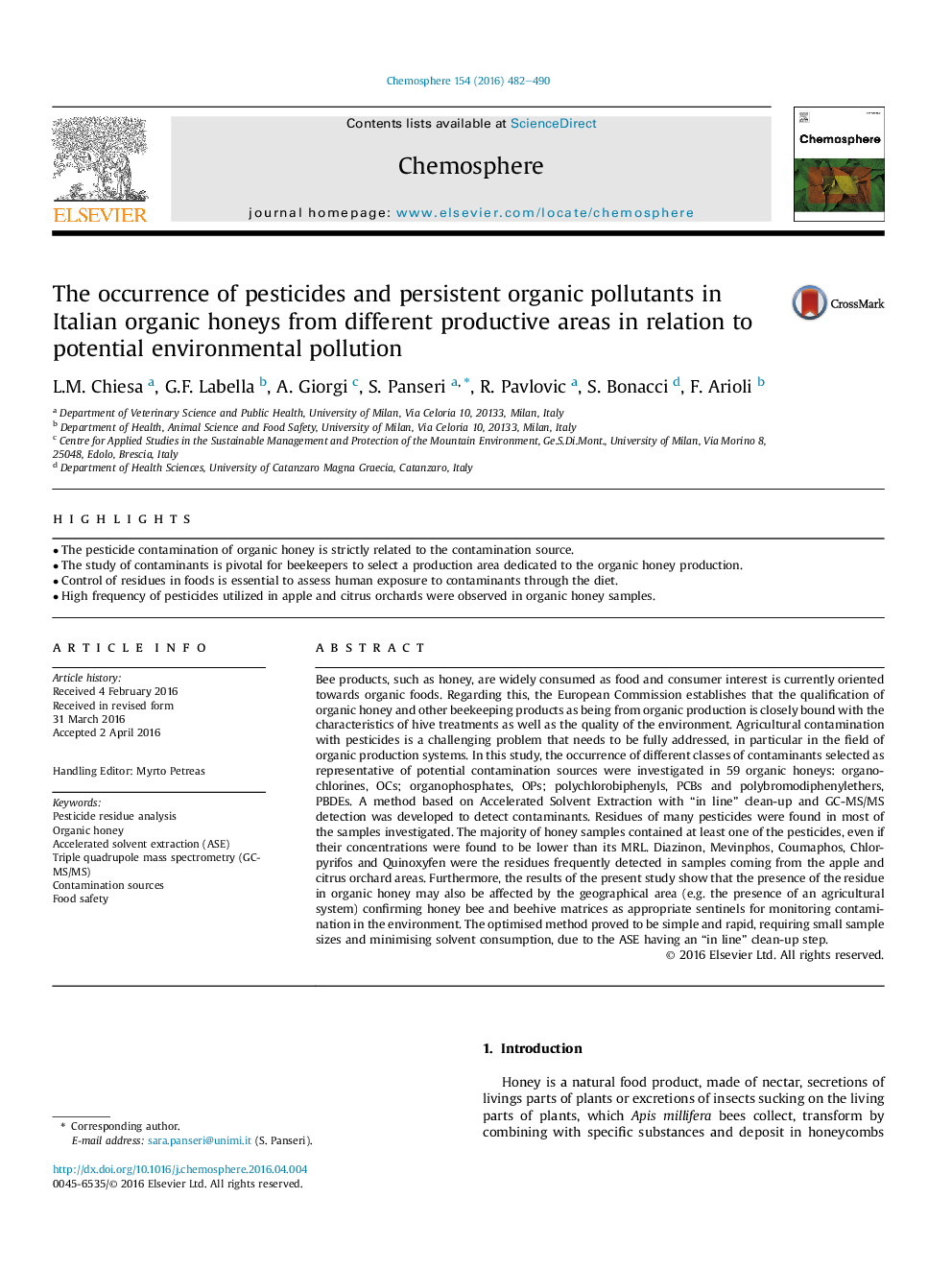| کد مقاله | کد نشریه | سال انتشار | مقاله انگلیسی | نسخه تمام متن |
|---|---|---|---|---|
| 6306648 | 1618817 | 2016 | 9 صفحه PDF | دانلود رایگان |
عنوان انگلیسی مقاله ISI
The occurrence of pesticides and persistent organic pollutants in Italian organic honeys from different productive areas in relation to potential environmental pollution
ترجمه فارسی عنوان
وقوع آفت کش ها و آلاینده های آلی پایدار در عسل های آلی ایتالیایی از مناطق تولیدی مختلف در ارتباط با آلودگی احتمالی محیط زیست
دانلود مقاله + سفارش ترجمه
دانلود مقاله ISI انگلیسی
رایگان برای ایرانیان
کلمات کلیدی
موضوعات مرتبط
علوم زیستی و بیوفناوری
علوم محیط زیست
شیمی زیست محیطی
چکیده انگلیسی
Bee products, such as honey, are widely consumed as food and consumer interest is currently oriented towards organic foods. Regarding this, the European Commission establishes that the qualification of organic honey and other beekeeping products as being from organic production is closely bound with the characteristics of hive treatments as well as the quality of the environment. Agricultural contamination with pesticides is a challenging problem that needs to be fully addressed, in particular in the field of organic production systems. In this study, the occurrence of different classes of contaminants selected as representative of potential contamination sources were investigated in 59 organic honeys: organochlorines, OCs; organophosphates, OPs; polychlorobiphenyls, PCBs and polybromodiphenylethers, PBDEs. A method based on Accelerated Solvent Extraction with “in line” clean-up and GC-MS/MS detection was developed to detect contaminants. Residues of many pesticides were found in most of the samples investigated. The majority of honey samples contained at least one of the pesticides, even if their concentrations were found to be lower than its MRL. Diazinon, Mevinphos, Coumaphos, Chlorpyrifos and Quinoxyfen were the residues frequently detected in samples coming from the apple and citrus orchard areas. Furthermore, the results of the present study show that the presence of the residue in organic honey may also be affected by the geographical area (e.g. the presence of an agricultural system) confirming honey bee and beehive matrices as appropriate sentinels for monitoring contamination in the environment. The optimised method proved to be simple and rapid, requiring small sample sizes and minimising solvent consumption, due to the ASE having an “in line” clean-up step.
ناشر
Database: Elsevier - ScienceDirect (ساینس دایرکت)
Journal: Chemosphere - Volume 154, July 2016, Pages 482-490
Journal: Chemosphere - Volume 154, July 2016, Pages 482-490
نویسندگان
L.M. Chiesa, G.F. Labella, A. Giorgi, S. Panseri, R. Pavlovic, S. Bonacci, F. Arioli,
